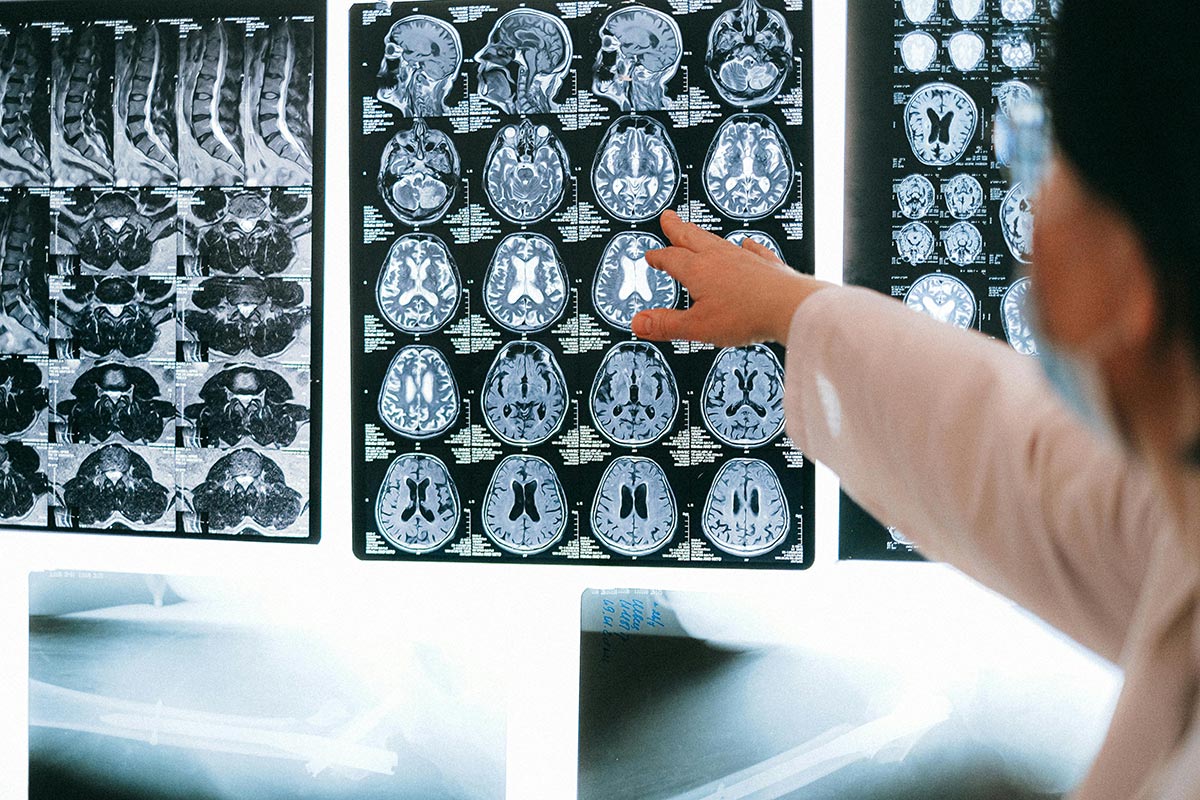
Introduction
Adolescent substance use remains a pivotal concern, with current trends showing alarming patterns that necessitate immediate attention. Recent studies have highlighted the various factors contributing to substance use among teens, the associated health risks, and the importance of effective prevention and intervention strategies. This article delves into the latest statistics and trends in adolescent substance use, explores the consequences, and discusses the motivations and factors influencing this behavior, while also examining the impacts of the COVID-19 pandemic on adolescent behaviors.
Current Trends in Adolescent Substance Use

What are the latest statistics and trends in adolescent substance use?
Recent statistics indicate that substance use among adolescents remains a significant concern. In 2023, approximately 10.9% of eighth graders, 19.8% of tenth graders, and 31.2% of twelfth graders reported using illicit substances in the past year. This data shows usage levels stabilizing below pre-pandemic figures.
Alcohol abuse continues to be prevalent, with 62% of twelfth graders reporting having abused alcohol by their senior year. Notably, 83.88% of teenagers who used drugs in the last month indicated they used marijuana, marking it as the most commonly used illicit substance among adolescents.
Most commonly used substances by adolescents
Adolescents typically experiment with a variety of substances, including:
| Substance | Estimated Recent Use (%) | Potential Risks |
|---|---|---|
| Alcohol | 62% of seniors | Risk of addiction, liver damage, impaired judgment |
| Marijuana | 84% reported use | Cognitive deficits, mental health issues |
| Prescription Drugs | 10% reported use | Risk of dependency, overdose |
| Tobacco | 5% reported use | Respiratory problems, long-term health issues |
| Vaping | 12% reported use | Lung problems, nicotine addiction |
The prevalence of inappropriate substance use underlines the need for effective prevention and intervention strategies.
Stability of substance use levels post-pandemic
During the pandemic, there were fluctuations in adolescent substance use behaviors, but recent data indicates stability in levels. For example, reports show alcohol usage diminished slightly, falling from 51.9% in 2022 to 45.7% in 2023 among twelfth graders, while nicotine vaping remained stable for eighth graders.
Despite these small shifts, the ongoing risk of overdose, particularly linked to counterfeit substances, raises significant concerns regarding adolescent health and safety. Mental health challenges further complicate the issue, necessitating comprehensive support frameworks for effective intervention.
Consequences of Adolescent Substance Use

What are the consequences and implications of adolescent substance use?
Adolescent substance use poses serious threats to both health and development. Health risks include respiratory problems from smoking, cardiovascular issues, and an increased risk of addiction. Additionally, daily use can lead to liver damage and various long-term medical conditions.
The impact on brain development is particularly concerning. Substances can disrupt the normal progression of brain maturation, impairing cognitive functions such as memory and attention. Studies show adolescents who use substances are more likely to experience cognitive deficits, which can persist into adulthood, exacerbating their challenges with academic and life success.
Socially and academically, substance use often leads to deterioration in relationships and challenges in performance. Statistics indicate that up to 50% of adolescents report decreased grades, and many experience family conflicts due to their behaviors. Additionally, a significant portion indulge in risky behaviors, such as driving under the influence and unsafe sexual practices, increasing their vulnerability to accidents and crises.
Consequently, these factors necessitate effective prevention strategies. Early interventions focusing on education, family involvement, and strategies to address underlying mental health issues can significantly mitigate the adverse effects of substance use among adolescents.
Factors Influencing Adolescent Substance Use

What factors influence substance use among adolescents?
Substance use among adolescents is influenced by a complex interplay of risk and protective factors across individual, familial, and community domains. Individual risks include mental health challenges, impulsivity, and behavioral problems. For instance, studies have shown that adolescents experiencing anxiety or depression are significantly more likely to misuse substances, with 40% citing drug use as a coping mechanism for their mental health issues.
Familial influences also play a crucial role. Factors such as parental substance use, poor monitoring, and experiences of childhood trauma or maltreatment heighten the susceptibility to substance use. Adolescents with a family history of substance use disorders have a higher likelihood of developing similar patterns themselves, suggesting the importance of family dynamics in prevention strategies.
Social environments contribute significantly as well. Peer pressure is a powerful motivator, with many youths indicating they are more likely to use drugs in the presence of friends. Research shows that about 81% of adolescents engage in substance use with their peers, making the social aspect a critical area for intervention. Conversely, having strong family ties, engaging in open discussions about substance risks, and fostering positive connections within schools can serve as protective factors.
Incorporating early intervention strategies that enhance these protective factors while addressing risk factors is vital for preventing substance use disorders in youth.
| Factor Type | Risk Factors | Protective Factors |
|---|---|---|
| Individual | Mental health issues, impulsivity, behavioral problems | Strong coping mechanisms, resilience |
| Familial | Parental substance use, poor monitoring, childhood maltreatment | Supportive family environment, active communication |
| Social | Peer pressure, associations with delinquent friends | Healthy peer relationships, community engagement |
By understanding these factors, we can work to establish more effective prevention programs aimed at reducing adolescent substance use.
Strategies and Resources for Early Intervention

What are some early intervention strategies and resources available for help with adolescent substance use?
Effective early intervention strategies for adolescent substance use focus on both prevention and support. School-based prevention programs are crucial, as they can significantly reduce smoking initiation and alcohol consumption among students. These programs often include education about the risks associated with substance use and create an environment conducive to healthy choices.
In addition to school initiatives, family-based interventions can play a vital role. By fostering better family dynamics and communication, these programs address foundational issues that may contribute to substance use. Successful models emphasize the importance of family involvement in prevention efforts to positively influence adolescent behavior.
Comprehensive approaches, such as the 'Teen Intervene' program, which combines sessions for both adolescents and their parents, have shown promising results with larger effect sizes compared to single-pronged efforts. This inclusive model promotes dialogue and understanding, making it an effective intervention.
Implementing community involvement through coalitions and youth-led prevention initiatives further bolsters these strategies. These efforts cultivate a supportive environment by addressing broader social factors that influence substance use. Individual-level strategies, including motivational interviewing and life-skills development, provide additional support for at-risk youth, equipping them with essential tools to navigate challenges without resorting to substances.
Impact of COVID-19 on Adolescent Substance Use
What impacts did COVID-19 have on adolescent substance use behaviors?
COVID-19 significantly influenced adolescent substance use behaviors, primarily due to heightened stress, isolation, and uncertainty. Research indicates that teens encountering financial difficulties during the pandemic were more likely to engage in increased alcohol consumption. Concurrently, mental health struggles, including anxiety and depression, were prevalent, correlating with a rise in drug use behaviors.
Although the overall rate of adolescent drug use remained relatively stable, notable shifts in patterns were observed:
- Alcohol Use: Decreased during the pandemic
- Nicotine Use: Increased, with many reporting upsurges in vaping
- Prescription Drug Misuse: Also reported to have risen, particularly among those seeking relief from stress and anxiety.
Furthermore, adolescents who maintained social connections experienced fewer depressive symptoms. This suggests that strong social networks can serve as a protective factor against mental health deterioration and substance use. The relationship between economic hardship and mental health remained a crucial factor in shaping adolescent substance use patterns during this period, emphasizing the need for ongoing support and intervention strategies to foster resilience against such challenges.
Motivations for Substance Use Among Teens
What are the motivations behind substance use among teenagers?
The motivations behind substance use among teenagers are varied and complex. Many teens use drugs to relieve boredom, alleviate stress, or cope with emotional pain. Research indicates that a significant percentage, around 73%, use substances to feel mellow or calm, and nearly half report using drugs to stop worrying about problems or forget bad memories.
Emotional and Psychological Triggers for Substance Use
Adolescents often face emotional challenges, including anxiety and depression. These conditions increase the likelihood of substance use as a coping mechanism. For instance, 40% of teens cite drug use as a way to aid their depression or anxiety. The search for relief from stress and the desire to manage personal challenges are strong motivators in the choices they make regarding substance use.
Role of Social Relationships and Peer Influences
Peer influence is a significant factor affecting teen substance use. About 81% of adolescents report using substances in the company of friends, suggesting that social contexts play a critical role in shaping their behaviors. This social aspect can normalize drug use and encourage experimentation, often leading to elevated risk behaviors.
Impact of Family Dynamics and Expectations
Family dynamics also impact substance use motivations. Adolescents who grow up in environments where substance use is prevalent are more likely to engage in similar behaviors. Factors such as low family support, family conflict, or a history of substance use among family members can push teens towards using drugs to cope with their circumstances. This interrelation between family influence and individual choices highlights the multifaceted nature of adolescent substance use, necessitating comprehensive prevention and intervention strategies.
Prevalence and Patterns in Substance Use
Behavioral Patterns and Common Settings for Use
Daily substance use among adolescents predominantly occurs in social settings. Research indicates that 81% of teens use substances with friends, highlighting a social influence on their consumption patterns. Conversely, 50% of those misusing prescription medications reported using alone, emphasizing potential risks associated with solitary use, particularly regarding overdose.
Demographic Insights into Usage Variance
Statistical data shows that 10.9% of eighth graders, 19.8% of 10th graders, and 31.2% of 12th graders reported using illicit substances in the past year, signifying a tiered increase in use with advancing age. Findings show that serious substance use initiates between the ages of 15-19 for over 50% of users, marking this period as critical for intervention.
Longitudinal Trends and Usage Stability
While there has been some stabilization in overall rates, current statistics reveal 25% report using alcohol, 18% for marijuana, and 10% for prescription drugs. This consistent engagement reflects broader societal trends in substance acceptance. Ongoing surveys reinforce the need for continual prevention strategies to address persistent usage patterns among youth.
Prevention and Parental Guidance

Role of Parental Involvement and Monitoring
Parental involvement plays a crucial role in preventing substance use among adolescents. Parents who are actively engaged in their children’s lives can monitor their behavior and influence their decisions regarding risky activities. Establishing a strong, trusting relationship encourages teens to confide in their parents, reducing the likelihood of substance experimentation.
Effective Communication and Education
Open communication is essential for educating teens about the harms of substance use. Parents should discuss the risks associated with alcohol, marijuana, and other drugs, reinforcing non-use as a positive goal. Programs that facilitate these discussions can empower teens to make informed choices, ultimately lowering rates of misuse.
Community Support and Preventative Measures
Community initiatives, such as workshops and school-based programs, can complement parental guidance. By incorporating educational resources and fostering supportive environments, communities can enhance the effectiveness of parental involvement in substance use prevention. These collaborative efforts can provide teens with healthy coping strategies and reduce reliance on substances.
Conclusion
Addressing adolescent substance use requires a concerted effort to understand the nuanced patterns and motivations behind usage, the prominent role of psychological and socio-environmental factors, and the acute need for effective prevention and intervention strategies. By raising awareness, enhancing support systems, and promoting healthy mental and social health practices, we can better equip young individuals to navigate the challenges they face and reduce the risks associated with substance use. It is imperative for communities, schools, and families to join forces in creating a safe and supportive environment for adolescents to thrive, free from the detrimental effects of substance abuse.
References
- Addressing The Impact Of Daily Adolescent Substance Use
- New Study Shows Alarming Information About Daily Adolescent ...
- COVID-19 and Substance Use in Adolescents - PMC
- Stress driving substance use in American teens, study finds
- Reported drug use among adolescents continued to hold below pre ...
- Teenage Drug Use Statistics [2023]: Data & Trends on Abuse
- Study: Teen drug use driven by stress - Health Policy Institute of Ohio
- CDC report finds teens use drugs to ease stress and anxiety, often ...
- Characteristics of Alcohol, Marijuana, and Other Drug Use Among ...
- Alarming Information About Daily Adolescent Substance Use
.svg)





